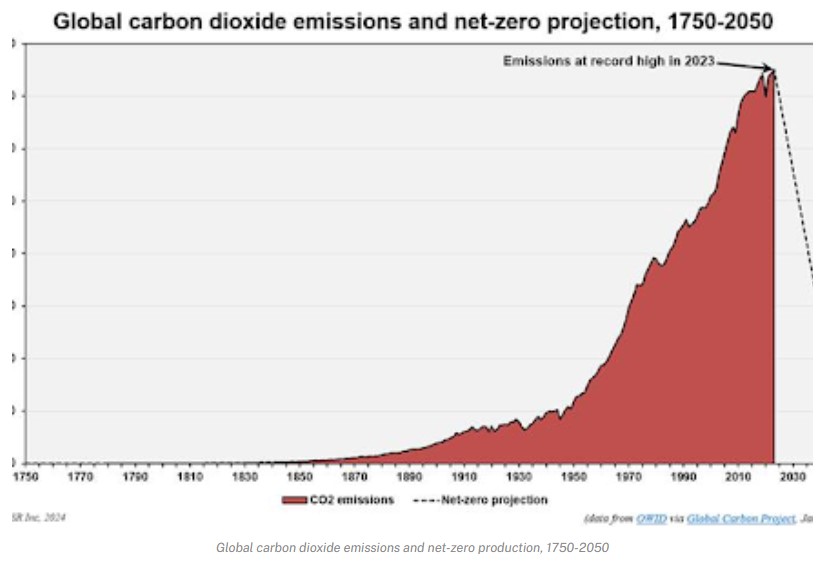
Confusion sometimes results from failure to distinguish production capacity from actual generation since solar and wind installations typically generate only 20 to 50 percent of their theoretical capacity. To reach net zero emissions by 2050 by providing 100 percent of total global energy from renewables, we would need a nearly ten-fold increase in renewable energy production, even assuming zero growth in overall global energy demand during that time. Mechanized technologies for carbon capture and storage (CCS) and direct air capture (DAC) that would be required to do this have been criticized as being too expensive, too energy intensive, and underperforming in terms of their goal. The likelihood of limiting warming to 1.5 degrees Celsius (the goal stated in the Paris Accords of 2015) is now extremely remote. Indeed, that threshold may be exceeded within just the next few years.
